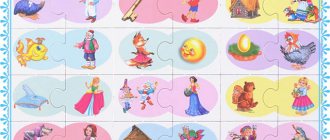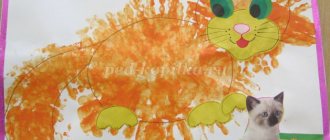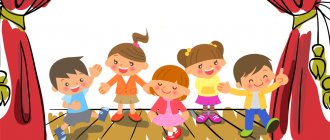Why is it worth taking fairy tale therapy training?
Professional growth and development is the key to the success of every specialist. And learning fairy tale therapy online from Elena Tararina and the international training center “Osnova” is an opportunity to master a highly effective method of art therapy for working with clients.
As a result of training in the proposed course, a specialist in helping professions (therapist, coach, psychologist, teacher, etc.) will be able to:
- work independently with fairy tales;
- write fairy tales to suit the individual request of each client;
- teach visitors to write their own fairy tales during receptions;
- see and “highlight” hidden metaphors and veiled meanings in fairy tales;
- conduct psychological diagnostics based on the client’s interpretation of fairy-tale images;
- provide psychological assistance and correction.
If such a method of art therapy as fairy tale therapy is relevant to you, our company’s courses will help you quickly and with guaranteed quality master this effective method of working with clients.
The use of fairy tale therapy in working with preschool children. - presentation
Using fairy tale therapy in working with preschool children
“A fairy tale is a lie, but there is a hint in it - a lesson for good fellows.” A fairy tale is one of the first types of artistic creativity that a child is introduced to. There is probably not a single child who would be indifferent to a fairy tale. After all, fairy tales are full of folk wisdom, they help you learn to listen to another person, teach you to see good and evil. A fairy tale helps a child learn to cope with difficulties and teaches him to find different ways out of difficult situations. A fairy tale told in time can help a child solve his childhood problem, gain self-confidence, and cure childhood fears. In the end, fairy tales can direct a child’s energy in the right direction - the direction of self-knowledge and boundless creativity. “Fairy tales can help educate the mind, give keys to enter reality in new ways, can help a child learn about the world and give him imagination” D. Rodari
Fairytale therapy is one of the types of health-saving technologies. It is an innovative method in working with children, which allows you to gently and unobtrusively influence a child with the help of a fairy tale, while solving a variety of problems. A fairy tale is the most effective and proven way and means of raising and teaching children, as well as one of the effective methods of working with children experiencing certain emotional and behavioral difficulties. In what cases is treatment with a fairy tale appropriate? It is necessary if the child has emotional, personal and behavioral problems: aggressiveness, anxiety, fears, moodiness, shyness and self-doubt. A fairy tale allows a child to actualize, realize his problems, and see different ways to solve them.
Types of fairy tales (Zinkevich-Evstigneeva classification): Types of fairy tales (Zinkevich-Evstigneeva classification):
Fictional tales Fictional tales are divided into folk and author's tales. Folk tales contribute to the education of moral and aesthetic feelings: mutual assistance, support, empathy, sympathy, duty, responsibility, etc. Thus, the fairy tale “Turnip” clearly reflects the fact that the help and support of other people allows one to achieve a goal that is beyond the power of one person . The main idea of the fairy tale “Masha and the Bear” is that you can always find a way out of any difficult situation, the main thing is not strength, but ingenuity.
Didactic fairy tales Didactic fairy tales are used to present children with educational knowledge that is new to them. In these fairy tales, symbols that are abstract for a child: letters, numbers, sounds become animated and tell about concepts that are new to the child. Educational and cognitive material presented in the context of a fairy tale is more easily perceived by the child, which means the learning process becomes more effective.
Diagnostic fairy tales Diagnostic fairy tales allow you to determine whether a child has a problem, as well as determine his character and attitude to what surrounds him. For example, if a child prefers fairy tales where the main character is a cowardly bunny, then we can assume that he himself is quite shy, with an increased level of anxiety. A diagnostic fairy tale can help identify a child’s condition that he does not want or cannot talk about out loud.
Psychocorrectional fairy tales Psychocorrectional fairy tales Psychocorrectional fairy tales help an adult to gently influence a child’s behavior, “replacing” an ineffective style of behavior with a more productive one and explaining to the child the meaning of what is happening, that is, unobtrusively, in a fairy-tale-magical form, a positive example of behavior is offered to the child, and it is not surprising that the child will behave in the same way as a fairy-tale hero. He will strive to use the example of a positive hero in the fight against his fears and problems.
Meditative fairy tales Meditative fairy tales activate children's positive emotions and teach them a positive attitude. A feature of these fairy tales is the absence of negative characters and conflict situations. Meditative tales are told to the accompaniment of special music that promotes relaxation. Such fairy tales calm, evoke positive emotions, instill harmony with oneself and others, inspire self-confidence, create an atmosphere of positivity, calm, comfort, relaxation, relieve stress and excitement. The nature of these tales is a journey. The principle of constructing a fairy tale is simple: calm music plays for seconds. The child takes a deep breath and exhales. The teacher says: “Now you and I are going on a journey to a beautiful fairyland...” or “to a magical forest...”
Each group of fairy tales has its own age children's audience. Children aged 35 understand and relate most to fairy tales about animals and fairy tales about the interaction between people and animals. At this age, children often identify themselves with animals and easily transform into them, copying their behavior. Starting from the age of 5, the child identifies himself mainly with human characters: princes, princesses, soldiers, and he likes fairy tales about people, because these stories contain a story about how a person experiences the world. The fairytale therapy method can be used with children as young as 3 years old. Zinkevich - Evstigneeva reads that fairy tales, like medicine, can be used from the age of 4, because fairy tale therapy becomes an effective means of influence only when a person clearly understands the difference between fairy tales and fiction from life and reality. And in a child, this awareness begins just at the turn of 4 years.
Reading a fairy tale and its analysis The goal is awareness, interpretation of what is behind each fairy-tale situation, behind the construction of the plot, behind the behavior of the characters. After children listen to a fairy tale, they are asked a series of questions: What is the fairy tale about? What do you remember most? Which heroes do you remember? Why? What happened to this or that character? What feelings arose while reading? At what moments were you happy? Which ones are sad? Did you feel sorry for anyone? What feelings, what mood after the fairy tale? Does this really happen in life? Have you ever experienced similar situations? What can we learn from this tale? Techniques for working with a fairy tale:
Storytelling: Telling a story in the first or third person. You can invite the child to tell a fairy tale on behalf of other characters participating or not participating in the fairy tale. For example, how the Fox, Baba Yaga or Vasilisa the Wise would tell the fairy tale about Kolobok. “Let's try to tell the story of Kolobok through the eyes of Baba Yaga, the Fox, Vasilisa the Wise, or the stump on which Kolobok sat.” Group storytelling. Each of the group of children takes turns telling a small piece of a well-known fairy tale. Telling a famous fairy tale and inventing a sequel to it. Group creation of a fairy tale. The first child says the first phrase: “In a certain kingdom, in a certain state...”, the next child adds one or two phrases to the fairy-tale phrase, etc. This technique helps develop voluntary memory; fantasy and imagination; the ability to express one's thoughts; listening skills.
Playing out episodes of a fairy tale, dramatization Playing out episodes allows the child to feel some emotionally significant situations and play out emotions, playing out a fairy tale in roles. The child intuitively chooses a “healing” role for himself. And here it is necessary to give the role of the screenwriter to the child himself, then the problematic moments will definitely be played out. Staging fairy tales with the help of dolls When working with a doll, the child sees that his every action is immediately reflected in the doll’s behavior. This helps him independently correct his movements and make the doll’s behavior as expressive as possible. Working with dolls allows you to improve and express through a doll those emotions that a child, for some reason, usually cannot allow himself to express. Drawing based on a fairy tale - drawing the most significant passage for a child; - a favorite fairy-tale hero, - a fairy-tale country - By drawing or working with various materials, the child embodies everything that worries him, feelings and thoughts, freeing himself from anxiety or another feeling that bothered him. Techniques for working with a fairy tale:
The structure of a fairytale therapy session contains: The ritual of “entering a fairy tale” (the mood for working together). For example, passing a magic ball in a circle, passing through a magic hoop, a ritual saying: “The good sorceress invited us to visit, quietly opened the doors to a fairy tale for us.” “A fairy tale has come to visit us, it’s time for us to welcome it!” The main part, where the teacher tells the children a new fairy tale, uses a variety of techniques for working with the fairy tale (discussion, asking questions to children, dramatizing the fairy tale, drawing the fairy tale). The teacher discusses and analyzes together with the children in what situations in their lives they can use the experience that they have acquired Today. Summarizing Summarize the experience gained and connect it with existing experience. The teacher sums up the lesson. He clearly states the sequence of what happened in the classroom, notes individual children for their merits, emphasizes the significance of the experience gained, and pronounces specific real-life situations in which children can use the experience that they have acquired today. Ritual of “coming out of a fairy tale.” Children, standing in a circle, say: “We take with us everything important that happened to us today, everything we learned.”
Once upon a time we lived... The beginning of a fairy tale, a meeting with its heroes. First of all, choose a hero close to the child in gender, age, and character. For children 3-4 years old, it is recommended to make toys, little people and animals the main characters of fairy tales. Starting from the age of 5 - fairies, wizards, princesses, princes, soldiers And suddenly one day... The hero faces some kind of problem, conflict that coincides with the problem of the child. Describe the hero’s life in a fairy-tale land so that the child finds similarities with his own life, and attribute all the child’s experiences to the hero. Because of this…. It is shown what the solution to the problem is, and how the heroes of the fairy tale do it. Climax The heroes of the fairy tale cope with difficulties Denouement The result of the actions of the heroes of the fairy tale: “-” the hero who committed a bad deed is punished; “+” the hero who goes through all the trials and shows his best qualities is rewarded. The denouement of a correctional fairy tale should be positive. The moral of this fairy tale is this... The heroes of the fairy tale learn lessons from their actions, their lives change radically. Writing fairy tales In order for a fairy tale or story to gain power and provide help, it is necessary that the fairy tale plot unfold in a certain sequence: Writing fairy tales In order for a fairy tale or story to gain power and provide help, it is necessary that the fairy tale plot unfold in a certain sequence:
When children find themselves in a fairy tale, they easily perceive “fairy tale laws” - norms and rules of behavior. By emotionally discharging, releasing clamps, “playing out” fear, anxiety, aggression or guilt deeply hidden in the subconscious, children become softer, kinder, more self-confident, more receptive to people and the world around them. Fairytale therapy is one of the most effective types of pedagogical health-saving technologies, in the process of which all components of children’s health are involved. Having started using fairy tale therapy methods in your work, you need to remember that you should not expect results from fairy tale treatment right away, but there is no doubt that they will come. After all, work, patience and kindness, as in any fairy tale, will definitely be rewarded. Try it! I am sure that your students will like this technique and will help you in your work!




